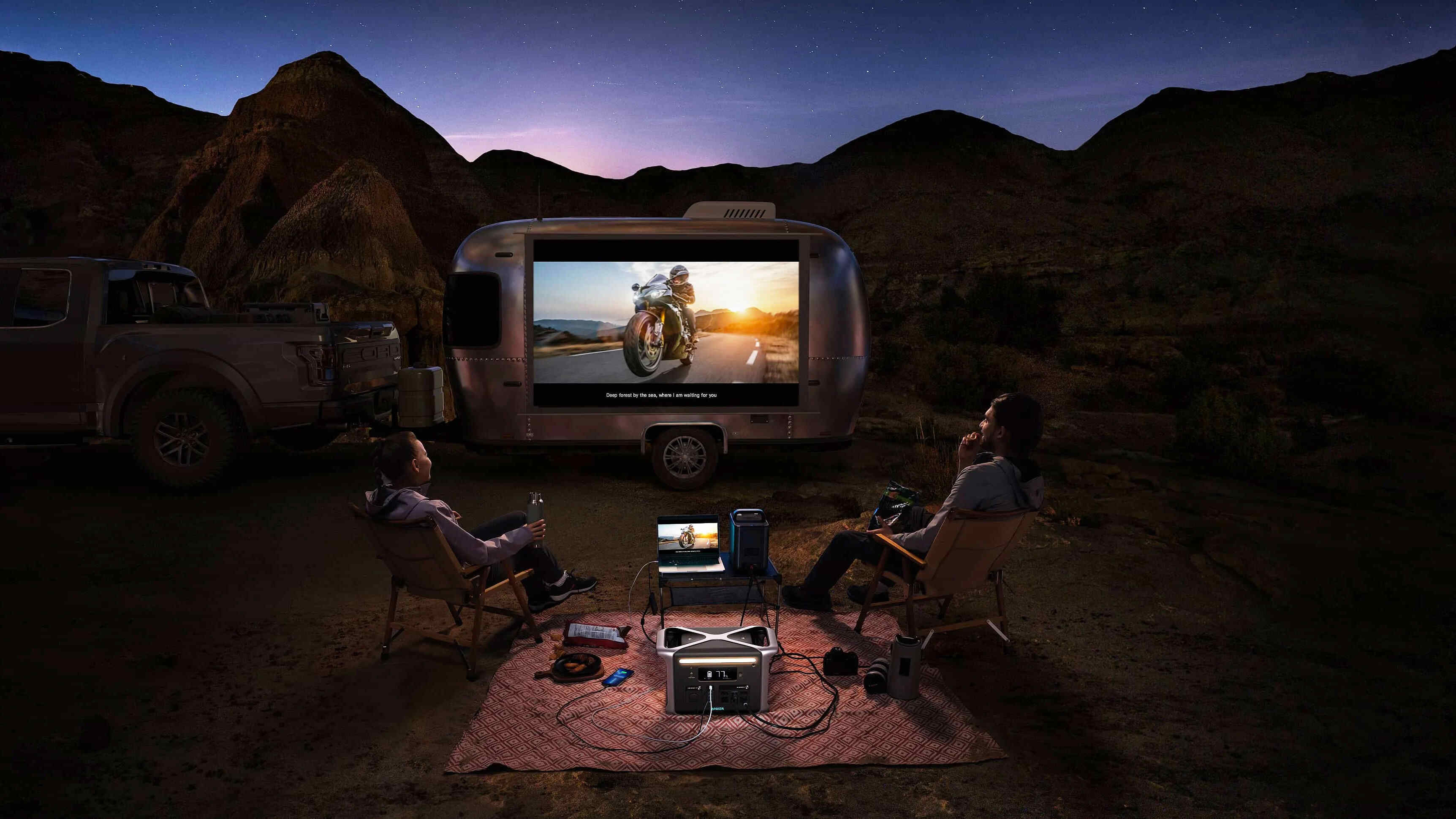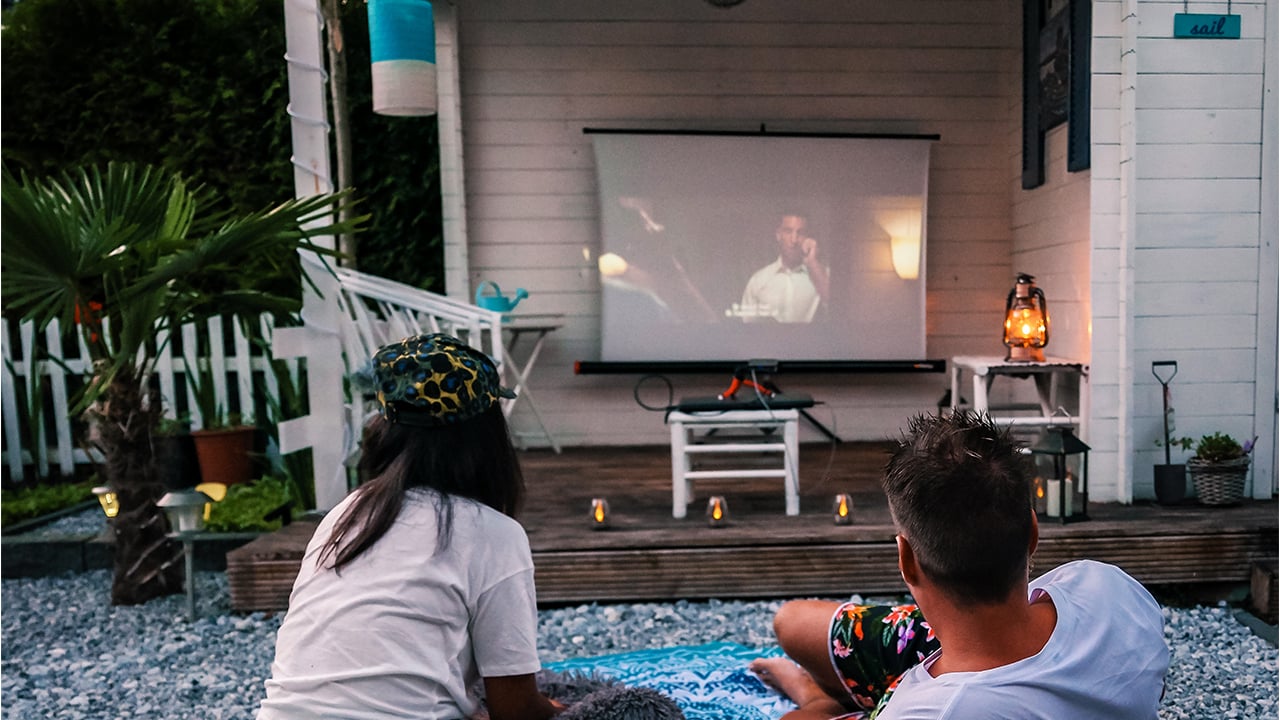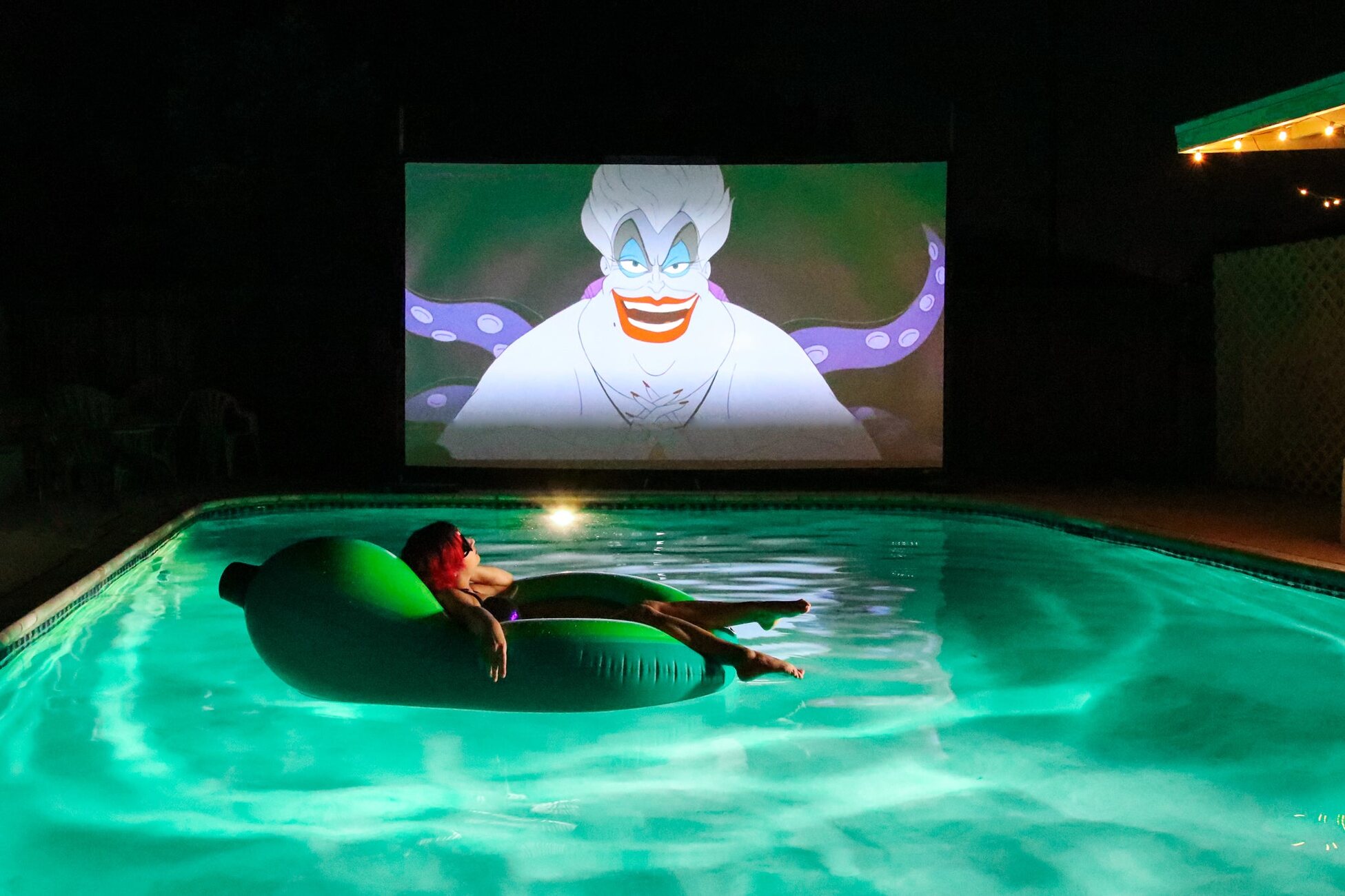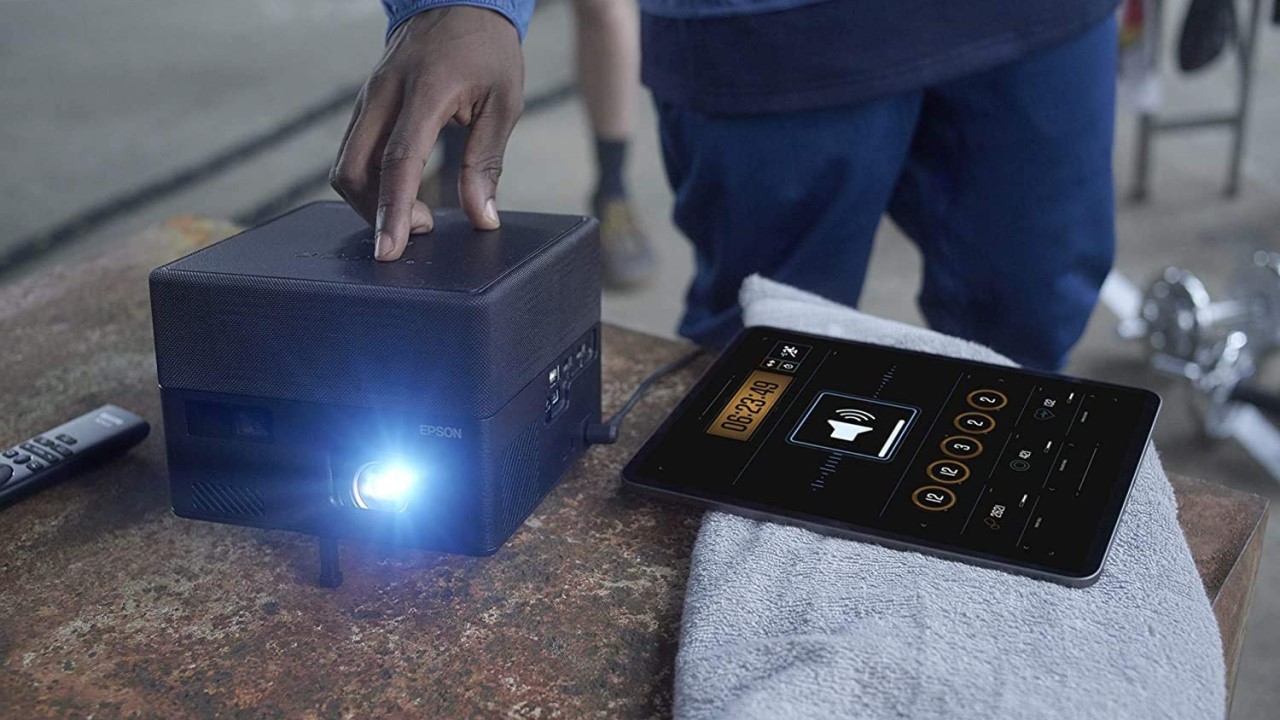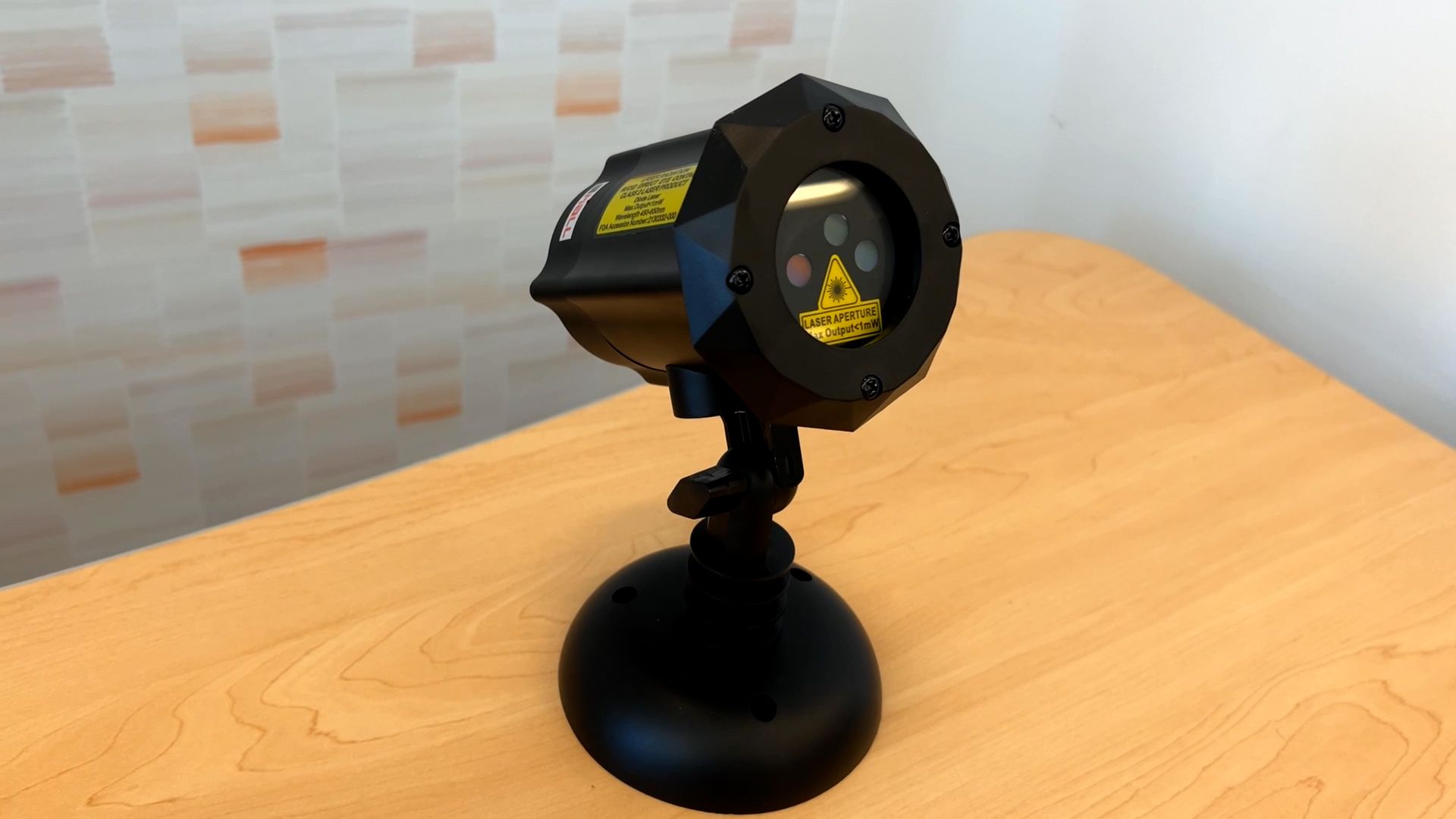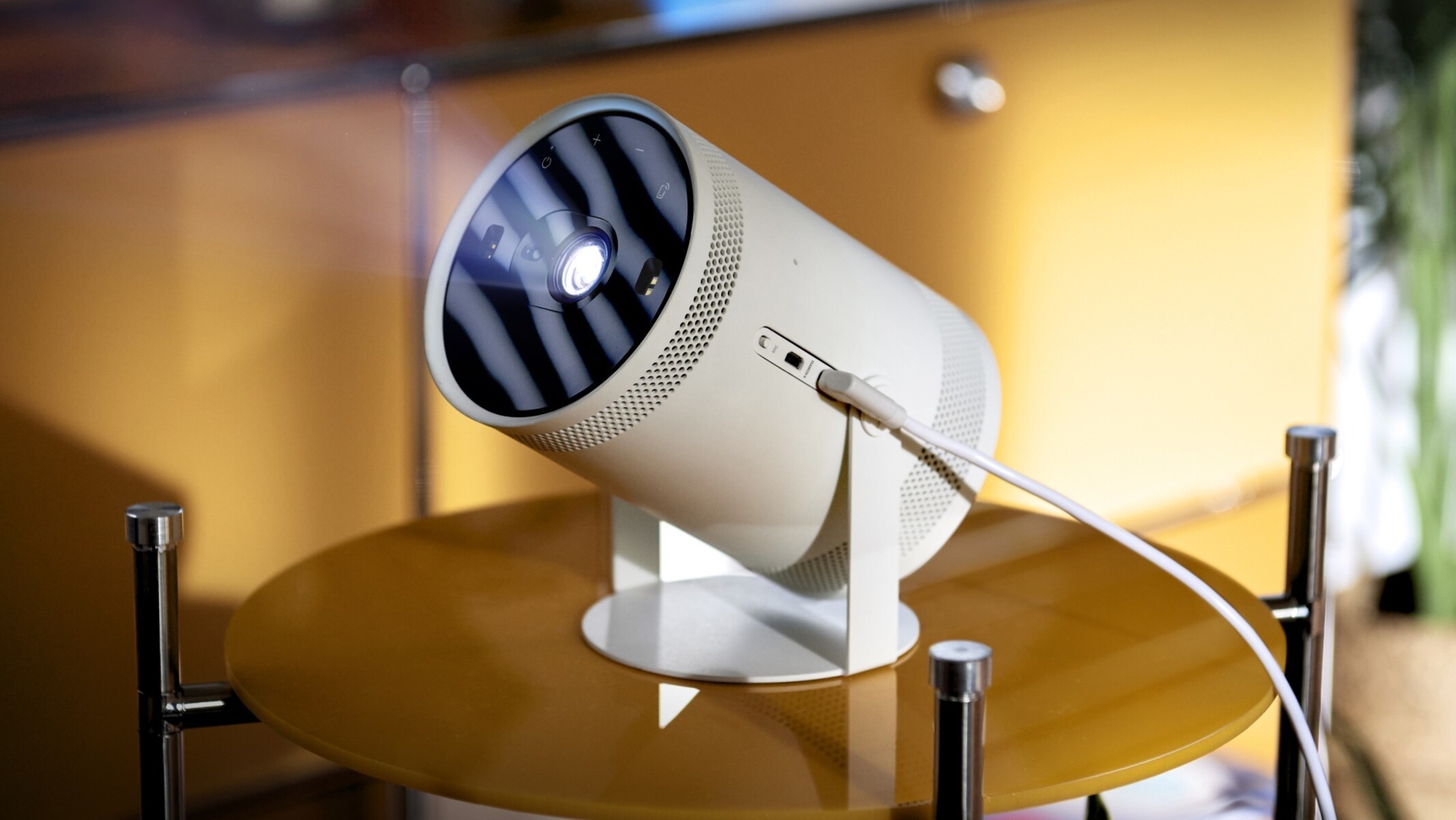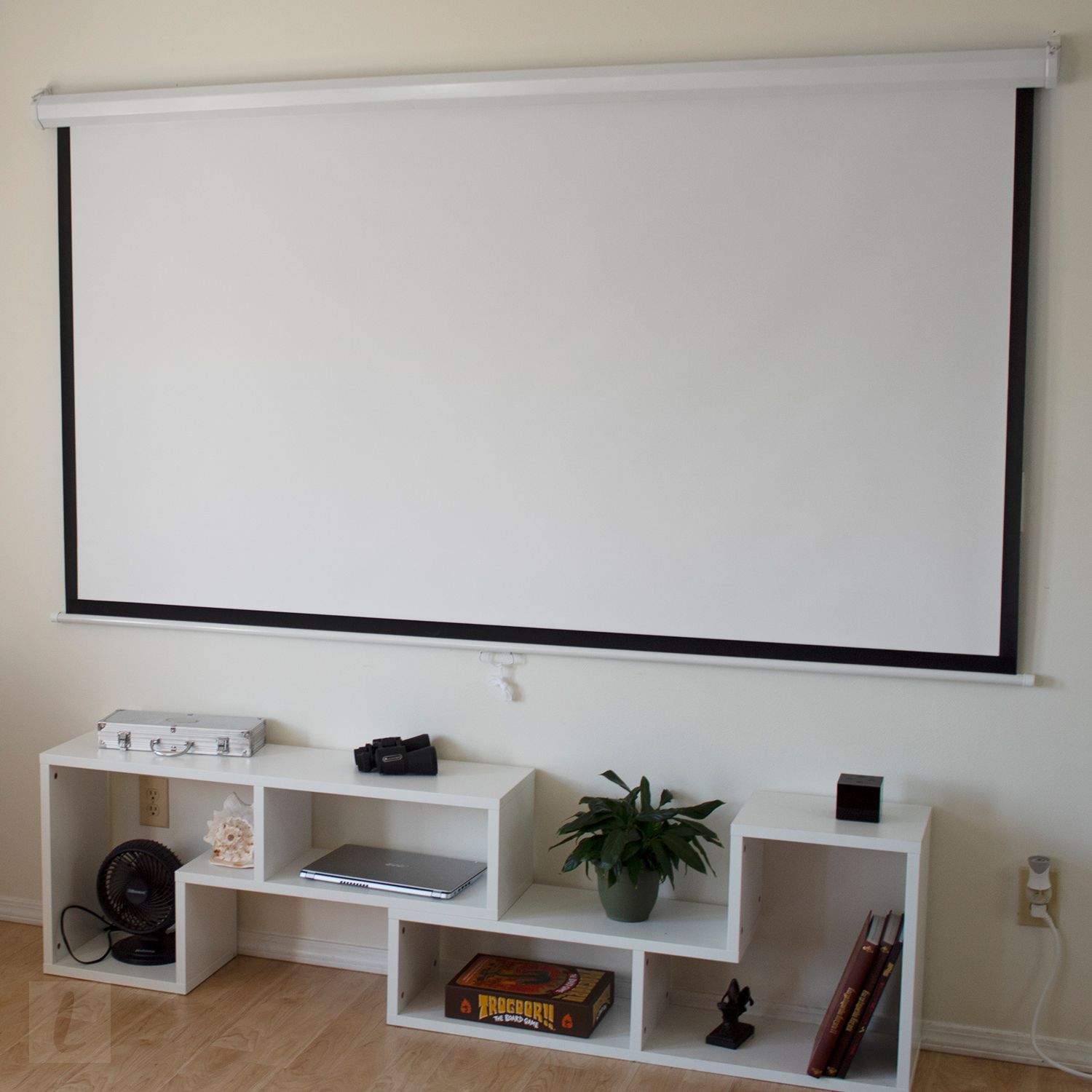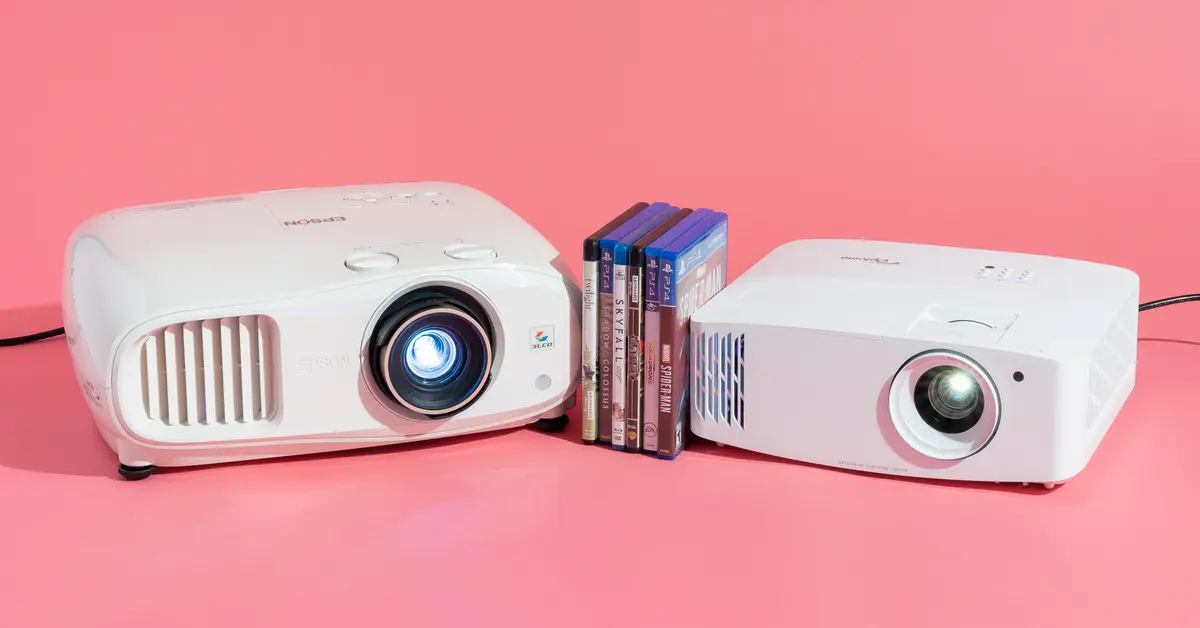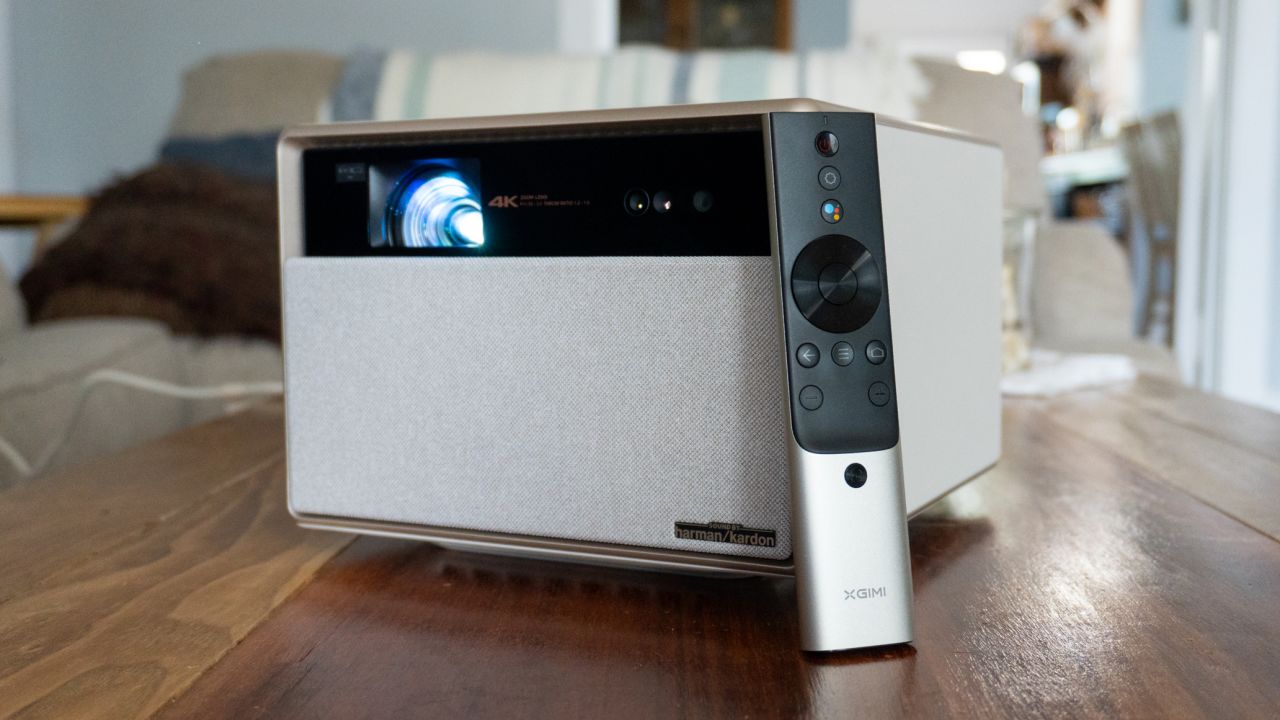Introduction
Welcome to this guide on what to look for in an outdoor projector! Whether you are planning a backyard movie night, a sports viewing party, or a fun outdoor event, having the right projector can make all the difference in your viewing experience. Outdoor projectors are specifically designed to provide bright and vibrant images even in open-air environments, allowing you to enjoy your favorite movies, shows, and games under the stars.
With a wide range of projectors available in the market, it can be overwhelming to choose the one that best suits your needs. That’s why we have put together this comprehensive guide to help you navigate through the key factors to consider before making your purchase.
When it comes to outdoor projectors, there are several important features that you should pay attention to. These features include brightness, resolution, contrast ratio, throw ratio, connectivity options, portability, projection size and distance, image quality, sound quality, as well as price and value for money. By understanding and evaluating these factors, you will be able to make an informed decision and find the perfect outdoor projector that meets your requirements.
Before we delve into the details, it’s worth mentioning that outdoor projectors have come a long way in recent years. They are now more affordable, compact, and user-friendly than ever before. Whether you are a beginner or a seasoned projector enthusiast, there is a wide range of options available to suit your budget and requirements.
So, let’s dive into the important aspects to consider when choosing an outdoor projector. By the end of this guide, you will have a clear understanding of what to look for in order to enhance your outdoor entertainment experience.
Brightness
Brightness is a crucial factor to consider when choosing an outdoor projector. Since outdoor environments have more ambient light compared to indoor spaces, it is important to select a projector that can produce bright and clear images even in well-lit conditions.
The brightness of a projector is measured in lumens. The higher the lumen count, the brighter the projection will be. When it comes to outdoor projectors, it is recommended to look for models with a minimum brightness of 2,000 to 3,000 lumens. This ensures that the projected image can be seen clearly, even when there is some natural or artificial light present.
However, keep in mind that higher brightness levels typically come with a higher price tag. If you are planning to use the projector mostly for evening or nighttime events, a projector with lower brightness might still be suitable. On the other hand, if you anticipate using the projector during daylight hours or in well-lit areas, it is advisable to invest in a projector with higher lumens for optimal visibility.
Another factor to consider regarding brightness is the presence of a high-quality bulb. Projectors with LED or laser light sources tend to offer better brightness and color reproduction compared to traditional lamps in terms of longevity and overall performance.
Lastly, it is important to note that while brightness is crucial, it is also dependent on other factors such as screen size, distance, and surface reflectivity. The recommended brightness level may vary depending on these factors. So, be sure to consider the specific requirements of your outdoor setup and choose a projector that can deliver the desired brightness for your viewing needs.
Resolution
The resolution of an outdoor projector refers to the number of pixels that make up an image displayed on the screen. It is an important factor to consider as it directly impacts the clarity and detail of the projected images.
When it comes to resolution, you will commonly come across terms like 720p, 1080p (Full HD), and 4K. The higher the resolution, the more detailed and sharp the images will appear. For outdoor projectors, it is recommended to opt for at least 1080p resolution for a crisp and clear picture quality.
However, the choice of resolution ultimately depends on your specific needs and preferences. If you mainly plan to watch movies, sports events, or other high-definition content, a 1080p projector will provide an immersive viewing experience. On the other hand, if you are a tech enthusiast or want the absolute best image quality, you might consider investing in a 4K projector.
It is important to note that the resolution is not the only factor that determines image quality. The projector’s lens quality, color accuracy, and image processing capabilities also play a significant role. But a higher resolution projector will generally deliver better image detail and sharpness.
Keep in mind that higher resolution projectors tend to be more expensive. If you have a limited budget, a 1080p projector can still offer impressive image quality and be a cost-effective option for most outdoor entertainment setups.
Lastly, it’s worth mentioning that the viewing distance is also a crucial factor to consider when choosing the resolution. If you plan on projecting larger images or sitting closer to the screen, a higher resolution might be necessary to avoid pixelation and maintain image clarity.
To summarize, a projector with a higher resolution will provide sharper and more detailed images. However, consider your specific needs, budget, and screen size to choose the resolution that best suits your outdoor viewing experience.
Contrast Ratio
The contrast ratio is an essential specification to consider when choosing an outdoor projector. It measures the difference between the darkest and brightest parts of an image, determining the overall depth and richness of the projected visuals.
A higher contrast ratio means that the projector can display more distinct shades of black and white, resulting in sharper and more vibrant images. This is especially important for outdoor viewing where ambient light can impact the perceived image quality.
When it comes to contrast ratios, you will often come across two types: native contrast ratio and dynamic contrast ratio. The native contrast ratio refers to the projector’s inherent ability to produce deep blacks and bright whites without any adjustments. On the other hand, dynamic contrast ratio measures the projector’s ability to adjust the contrast based on the content being projected.
While dynamic contrast ratios may sound appealing with their high numbers, it is important to note that they are often inflated and can be misleading. Native contrast ratios are a more accurate representation of the projector’s performance.
When selecting an outdoor projector, aim for a higher native contrast ratio for improved image quality. A contrast ratio of at least 1000:1 is recommended, but projectors with higher contrast ratios like 3000:1 or 5000:1 will provide even better depth and detail.
Keep in mind that the contrast ratio is just one factor that contributes to image quality. Other factors like brightness and color accuracy also play a role. It is always recommended to consider the overall performance of the projector, including its contrast ratio, to ensure an engaging outdoor viewing experience.
Ultimately, the contrast ratio you choose will depend on your specific needs and budget. If you prioritize image quality and want more vibrant and detailed visuals, opting for a projector with a higher native contrast ratio is a wise choice.
Throw Ratio
The throw ratio is an important specification that determines the size of the projected image in relation to the distance between the projector and the screen or viewing surface. It is represented as a ratio, such as 1.5:1 or 2:1, indicating how far the projector needs to be placed from the screen to achieve a certain image size.
Understanding the throw ratio is crucial as it helps in determining the placement and positioning of the projector in your outdoor setup. A projector with a longer throw ratio will project a larger image from a greater distance, while a shorter throw ratio will produce a smaller image from a shorter distance.
Before purchasing an outdoor projector, consider the space you have available and how large of an image you want to project. Measure the distance between the screen or viewing surface and the area where you plan to place the projector. This will help you determine the ideal throw ratio for your needs.
It is worth noting that projectors with zoom and lens shift capabilities offer more flexibility in adjusting the throw distance and image size. This can be particularly useful if you have limited space or need to adjust the projection size for different events.
When choosing a throw ratio, keep in mind that a larger throw ratio will provide a larger image size, but it may require more space for proper placement. On the other hand, a smaller throw ratio can be more suitable for compact outdoor setups or when projecting onto smaller screens.
It’s important to select a projector with a throw ratio that aligns with your desired image size and available space. If you are unsure about the ideal throw ratio for your outdoor projector, consulting with a professional or referring to online projector calculators can provide valuable guidance.
Consider your outdoor setup and the specific requirements of your viewing area to choose a projector with the appropriate throw ratio. This will ensure that you can easily achieve the desired image size and maximize your outdoor viewing experience.
Connectivity Options
Connectivity options are an important consideration when choosing an outdoor projector. They determine the flexibility of connecting various devices to the projector for a seamless and immersive viewing experience.
Most outdoor projectors come equipped with a range of connectivity ports to accommodate different media sources and devices. The common connectivity options you should look for include HDMI, USB, VGA, and audio ports.
HDMI ports are essential for connecting devices like Blu-ray players, gaming consoles, and streaming devices. They provide high-quality digital audio and video signals, ensuring a crisp and clear projection. Make sure the projector you choose has multiple HDMI ports to connect multiple devices simultaneously.
USB ports are beneficial for playing media directly from USB flash drives or hard drives. It allows you to easily access and play various file formats, including photos, videos, and music, without the need for additional devices.
VGA ports are useful for connecting older laptops or computers that do not have HDMI ports. This allows you to connect these devices to the projector and enjoy your content on a larger screen.
In addition to these ports, audio ports are also important for connecting external speakers or sound systems. While some projectors come with built-in speakers, their audio quality may be limited. Therefore, having audio output options like 3.5mm audio jacks or Bluetooth connectivity can enhance your audio experience by connecting to external speakers.
When considering connectivity options, also check if the projector supports wireless connectivity features such as Wi-Fi or Bluetooth. This can provide the convenience of wireless streaming from smartphones, tablets, or laptops, eliminating the need for physical cable connections.
Moreover, pay attention to the compatibility of the projector with various media formats, including popular video formats like MP4, AVI, and MKV, as well as common image and audio formats. This ensures that your projector can seamlessly play your preferred media files.
By considering the connectivity options of an outdoor projector, you can ensure that it can accommodate all your devices and media sources, providing a versatile and convenient viewing experience.
Portability and Durability
Portability and durability are important factors to consider when choosing an outdoor projector, especially if you plan on using it for various outdoor events and gatherings.
Portability plays a crucial role in outdoor projectors as it determines how easy it is to transport and set up the device. Look for projectors that are lightweight and compact, making them easy to carry and store. Portable projectors often come with a carrying case or handle, further enhancing their convenience for outdoor use.
In addition to being lightweight, consider the power source of the projector. Opt for projectors that offer multiple power options, such as AC power, battery power, or both. This allows you to use the projector in different locations, whether you have access to electrical outlets or not.
Durability is also an important aspect to consider, as outdoor environments can be unpredictable. Ensure the projector is built with sturdy materials that can withstand outdoor conditions, such as dust, heat, cold, and humidity. Look for projectors with an IP rating, indicating their resistance to water and dust. This is especially important if you live in an area with frequent rain or if you plan on using the projector near pools or other water sources.
Additionally, check if the projector has a cooling system in place to prevent overheating during prolonged use. Adequate ventilation and built-in fans help to keep the projector running smoothly and extend its lifespan.
When considering portability and durability, also look for features that enhance user convenience and usability, such as adjustable stands or mounting options. These features allow for easy positioning and adjustment of the projector for optimal image projection.
Lastly, it’s worth considering the projector’s overall build quality and the reputation of the manufacturer. Read customer reviews and research the brand to ensure that you are investing in a projector that is reliable and built to last.
By considering the portability and durability of an outdoor projector, you can select a device that is easy to transport, resistant to outdoor elements, and designed for long-term use. This ensures that you can enjoy your outdoor entertainment without worrying about the reliability and performance of the projector.
Projection Size and Distance
Projection size and distance are crucial factors to consider when choosing an outdoor projector, as they determine the size of the image being projected and the optimal viewing experience for your outdoor setup.
First, consider the desired projection size based on your outdoor space and audience. Outdoor projectors can typically project larger image sizes compared to indoor models, allowing for a more immersive viewing experience. Measure the available space and consider the distance between the projector and the screen or viewing surface to determine the ideal projection size.
When it comes to projection distance, different projectors have different capabilities. Look for projectors that offer a wide range of throw distances, allowing you to adjust the size of the projected image based on your needs. This flexibility is especially important if you have limited space or if you want to project the image on various screen sizes.
It’s worth noting that projectors with shorter throw ratios can create larger images in closer proximity to the screen, while projectors with longer throw ratios require more distance to achieve the same size. Consider the specific requirements of your outdoor viewing area and the desired image size to choose a projector that offers the appropriate projection distance capabilities.
Additionally, check if the projector offers manual or automatic zoom and focus adjustments. These features allow for greater control over the image size and sharpness, making it easier to achieve the desired projection size without compromising on image quality.
Lastly, pay attention to the aspect ratio compatibility of the projector. The aspect ratio determines the width and height proportions of the projected image. The two most common aspect ratios are 16:9 (widescreen) and 4:3 (standard). Ensure that the projector you choose supports the desired aspect ratio to avoid any distortion or cropping of the projected image.
By considering the projection size and distance capabilities of an outdoor projector, you can ensure that the projected image fits your outdoor space and provides an optimal viewing experience for you and your audience.
Image Quality
When it comes to outdoor projectors, image quality is a fundamental aspect to consider. The overall image quality affects the clarity, color accuracy, and sharpness of the projected visuals, ultimately enhancing your viewing experience.
One of the key factors that contribute to image quality is the resolution, which has been discussed earlier. Higher resolution projectors offer sharper and more detailed images, ensuring a captivating visual experience. Opt for projectors with at least 1080p resolution for crisp and clear images.
Color reproduction is another important aspect of image quality. Look for projectors that offer accurate color rendering, vibrant hues, and a wide color gamut. This ensures that the projected images look vivid and true-to-life, enhancing your enjoyment of movies, sports, and other content.
Another factor to consider is the projector’s brightness level. Outdoor environments have more ambient light, which can affect the perceived brightness of the projected image. Choose a projector with sufficient brightness for clear visibility, even in well-lit conditions. Look for projectors with a minimum of 2,000 to 3,000 lumens to ensure a bright and vibrant image.
Contrast ratio also plays a role in image quality. Higher contrast ratios allow for better differentiation between dark and light areas in the image, resulting in more depth and detail. Look for projectors with higher native contrast ratios for improved image quality.
Additionally, the lens quality of the projector can impact image sharpness and clarity. High-quality lenses help to minimize distortion and deliver crisp, well-defined visuals. Make sure to choose projectors with high-quality lens construction for optimal image quality.
It’s also worth noting that image quality can be affected by external factors such as screen size, projection surface, and viewing distance. Consider these factors when setting up your outdoor projector to maximize image quality and ensure an immersive viewing experience.
Lastly, don’t forget about the image adjustment features that the projector offers. Look for projectors with keystone correction, zoom, and focus adjustments to fine-tune the image and achieve the best possible picture quality.
By considering all these factors and choosing a projector that excels in image quality, you can enjoy stunning visuals and a truly immersive outdoor viewing experience.
Sound Quality
While the image quality is crucial for an outstanding outdoor viewing experience, sound quality plays an equally important role. Having clear, immersive sound enhances the overall enjoyment of movies, shows, and games when using an outdoor projector.
When evaluating the sound quality of an outdoor projector, consider whether it has built-in speakers or requires external audio devices. Most projectors come with built-in speakers, but their audio capabilities can vary. Check the wattage and sound output specifications to ensure that the built-in speakers are powerful enough to deliver clear and loud sound, especially in outdoor settings where there may be background noise.
If you prefer a more immersive audio experience, consider connecting external speakers or a sound system to the projector. Many projectors have audio output ports, such as a 3.5mm audio jack or Bluetooth connectivity, allowing for easy connection to external speakers or sound systems. This provides more depth and richness to the audio, enhancing the overall cinematic experience.
In addition to the output capabilities, pay attention to the audio adjustment features that the projector offers. Look for projectors that have built-in equalizer settings or audio enhancement technologies. These features allow you to fine-tune the audio according to your preferences and optimize the sound quality for your outdoor setup.
Furthermore, it is worth considering the placement of the speakers or sound system in your outdoor setup. Ensure that they are positioned in a way that allows the sound to reach all viewers evenly, without being obstructed or distorted by surrounding objects or obstacles.
Take note that for larger viewing areas or events, it may be necessary to invest in a separate sound system with higher wattage and better audio quality. This can provide a more immersive and theater-like sound experience.
Lastly, it’s important to remember that the audio source you are using, such as a media player or streaming device, also influences the overall sound quality. Ensure that the audio source supports high-quality audio formats and consider using digital audio connections, like HDMI, for the best audio performance.
By considering the sound quality and optimizing audio settings, you can create a complete audio-visual experience with your outdoor projector and enjoy immersive sound that enhances the overall viewing experience.
Price and Value for Money
When considering an outdoor projector, price is an important factor to take into account. The price range for outdoor projectors can vary significantly, depending on the brand, features, and overall quality of the device.
When determining the price range that suits your budget, it is helpful to consider the specific requirements and intended use of the outdoor projector. Think about how often you plan to use it, the size of the viewing area, and the desired image and sound quality. These factors will help you determine the level of investment needed to meet your expectations.
While it’s natural to have a budget in mind, it’s important to remember that the cheapest option may not always provide the best value for your money. Cheaper projectors may compromise on image quality, brightness, durability, or other important features. It’s important to find a balance between price and performance.
Comparing prices and reading customer reviews can give you a better understanding of the value for money offered by different outdoor projectors. Look for projectors that have positive reviews and are known for their reliability and performance. Sometimes spending a little more for a higher-quality projector can result in a better long-term investment.
In addition to the initial purchase price, consider the overall cost of ownership. This includes factors such as bulb replacements, maintenance, and potential warranty coverage. Make sure to read the warranty terms and conditions to determine the level of support offered by the manufacturer.
Furthermore, consider the availability and affordability of accessories or additional components that you may need, such as mounting brackets, screens, or cables. Ensure that these additional costs fit within your budget and do not significantly impact the overall value for money you expect from the outdoor projector.
Remember that value for money is not just about getting the cheapest projector, but rather getting a projector that fulfills your requirements, offers good performance, and provides a satisfying outdoor viewing experience over the long run.
By carefully considering the price, performance, durability, and overall value for money aspect of an outdoor projector, you can make an informed decision and choose the best projector that meets your needs and budget.
Brand and Warranty
When purchasing an outdoor projector, considering the brand reputation and warranty coverage is essential. Opting for a reputable brand with a strong track record can give you confidence in the quality, performance, and support of the product you choose.
Well-established brands often have established manufacturing processes and quality control measures in place, ensuring that their projectors are built to a high standard. They also tend to have a wide range of models and options to cater to different consumer needs and preferences.
Reputable brands typically have a larger customer base, which means you can find more comprehensive and reliable customer reviews and feedback. This can help you gain insight into the experiences of other users and make a more informed decision.
In addition to brand reputation, it’s important to consider the warranty coverage offered by the manufacturer. A warranty provides protection and peace of mind in case of any defects or issues with the product.
Check the duration and coverage of the warranty, including what types of repairs or replacements are included. Some manufacturers offer a one-year warranty, while others provide extended warranties or additional protection plans for an additional cost.
Read the warranty terms and conditions carefully to understand any limitations or exclusions. Common warranty coverage includes parts and labor for manufacturing defects, while other damages may not be covered, such as accidental damage or misuse.
It’s worth noting that a comprehensive warranty cannot guarantee the longevity or performance of a product, but it serves as a reassurance that the manufacturer stands behind their product and is committed to customer satisfaction.
Consider researching customer experiences with the brand’s warranty service, such as responsiveness, efficiency, and overall satisfaction. This can give you an idea of the level of support you can expect if you encounter any issues with your outdoor projector.
By choosing a reputable brand and ensuring a solid warranty coverage, you can have confidence in your purchase and enjoy peace of mind knowing that your investment is protected.







